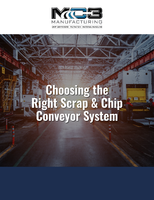Split-Chassis PC Platform offers table-top interface.
Press Release Summary:
Split-Chassis PC platform incorporates x1 TI PCI Express interface running over cable to support 2.5 Gbps bi-directional throughput. PCI-Express-to-PCI Bridge XIO2000 is connected to USB host controller, parallel ATA controller, and TI PCI7621 UltraMedia controller. Split unit enables users to upgrade system performance independently of I/O capability. Unit provides table-top interface for USB, FireWire®, or other connector, while keeping desktop tower hidden.
Original Press Release:
Texas Instruments Demonstrates Split-Chassis PC Platform at WinHEC
PCI Express Based Platform Meets Ergonomics Demands Without Compromising Performance
SEATTLE, WA (May 3, 2004) - Further strengthening its commitment to PCI Express architecture development and deployment, Texas Instruments Inc. (TI) (NYSE: TXN) announced today the demonstration of a Split-Chassis PC platform at the Windows Hardware Engineering 2004 Conference (WinHEC 2004) in Booth #207. The Split-Chassis PC platform is made possible by TI's new XIO2000 PCI-Express-to-PCI Bridge technology. At the heart of the demonstration, is an x1 TI PCI Express interface running over a cable, supporting full PCI Express performance of 2.5Gbps bi-directional throughput. (See www.ti.com/pciexpress for more information.)
"Although the concept of a Split-Chassis PC (or Modular PC) has been discussed within the industry for several years, today we are demonstrating the practical implementation of such a system enabled by PCI Express running over a cable, while providing 2.5Gbps of performance in both the upstream and downstream direction," said Dan Jensen, systems engineering manager at TI.
Meeting Consumers' Ergonomic Needs and Delivering High Performance
This development will enable OEMs to begin moving platform mechanical designs in line with ergonomic environments of everyday users. Desktop platforms today are typically placed on the floor, as far away from the user as practical, with the intention of trying to hide the desktop tower from the user's surroundings. Users are ready for devices that they interface with on a regular basis to be moved to the table top, while keeping the often bulky, loud and unattractive desktop tower hidden from sight.
"Many times users find themselves under a desk at the back of the PC trying to find an available USB, 1394 (FireWire®) or some other type of connector, then trying to determine which direction to insert the plug," said Jensen. "A Split-Chassis system, like what we are demonstrating, shows how an OEM can design a platform that meets a user's ergonomic needs without compromising performance. This concept also allows OEMs to 'upgrade and differentiate' platforms more effectively without modifying the main system board, helping to minimize the desktop clutter."
With Split-Chassis designs, consumers can choose to upgrade performance of their system at one time and then choose to upgrade the I/O capability of their system at another. Out of pocket expenses are therefore spread out over time, while keeping current with the latest system performance and I/O capabilities.
The TI Split-Chassis PC platform demonstration includes a desktop tower with the PCI Express x1 interface to the Split-Chassis I/O Hub running over a cable. The Split-Chassis I/O Hub incorporates TI's XIO2000 PCI Express-to-PCI Bridge, which is connected to a USB Host Controller, Parallel ATA Controller and the TI PCI7621 UltraMedia Controller. The demonstration supports simultaneous active connections between main system memory and the I/O connections in the Split-Chassis I/O Hub - all enabled by the high-performance capabilities of PCI Express.
"What is unique about this demonstration is that for the first time we have been able to extend the full performance of the primary I/O System Bus outside of the standard Desktop Chassis by leveraging the capabilities of PCI Express," said Jensen.
TI's Commitment to PCI Express
In addition to helping OEMs meet this ergonomic consumer demand, TI's commitment to PCI Express focuses on a complete portfolio of products built for the PCI Express architecture, enabling chip-to-chip interconnect, I/O interconnect for adapter cards and an I/O attach point to other interconnects such as PCI, 1394 (FireWire) and USB. Other planned products include PCI Express switch and physical layer devices, as well as devices supporting the "ExpressCard" specification (formerly known as "Newcard"), a small form factor successor to PC Card. These, along with existing TI devices such as CardBus, 1394 and USB, will provide designers a complete portfolio of interface options from TI.
About PCI Express
PCI Express is a point-to-point serial differential low-voltage interconnect that consolidates application requirements for use by multiple market segments. PCI Express architecture is a high-performance, highly flexible, scalable, reliable, stable and cost-effective general-purpose I/P architecture that seamlessly complements existing PCI buses and will transition the market over the next several years, allowing system and communication designers to use new topologies.




